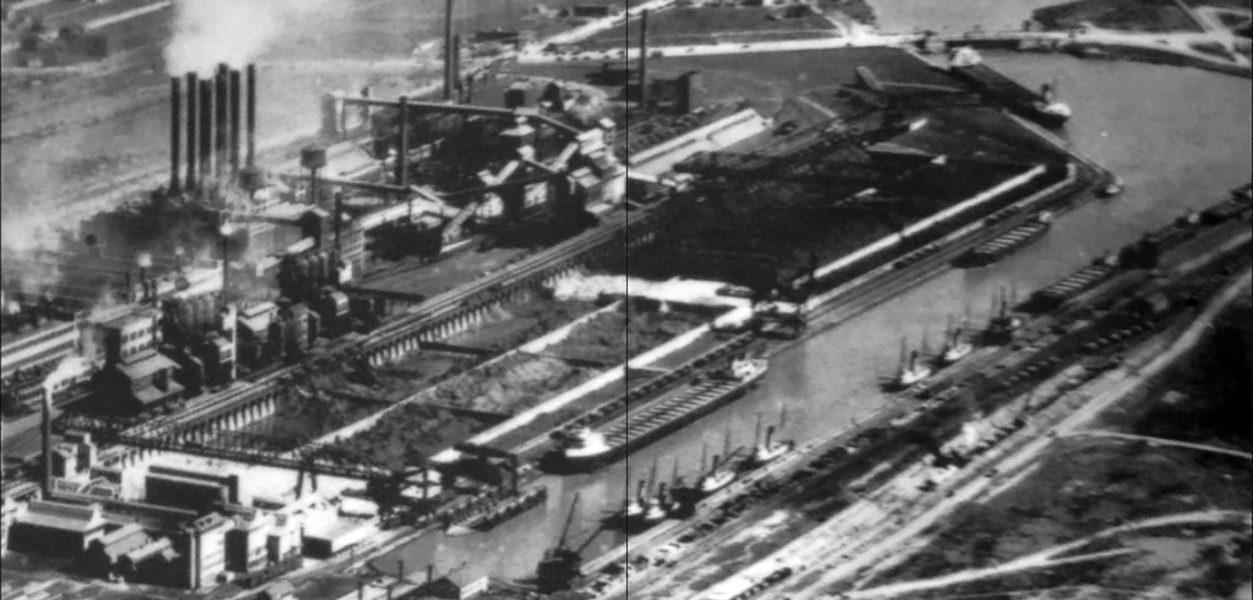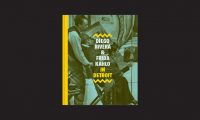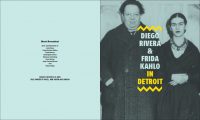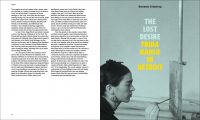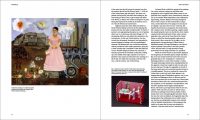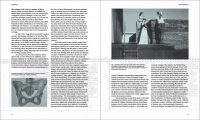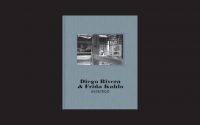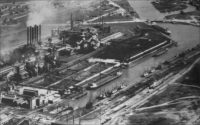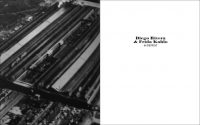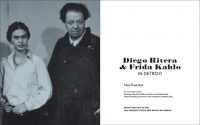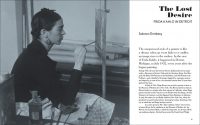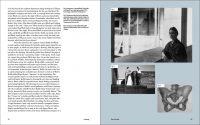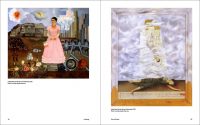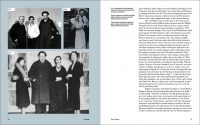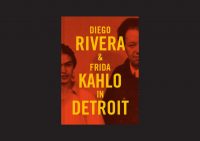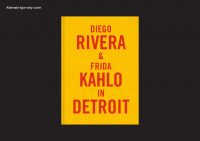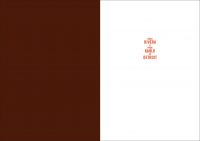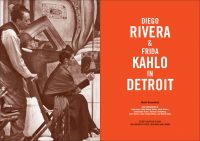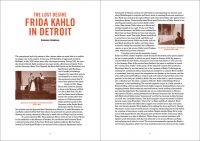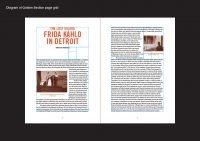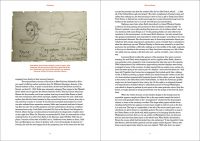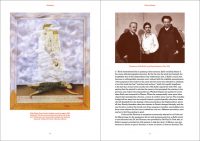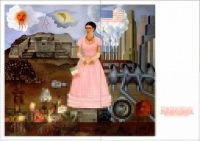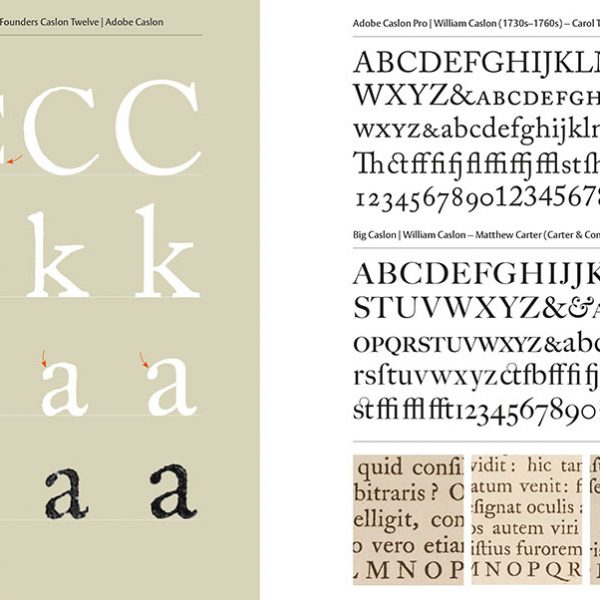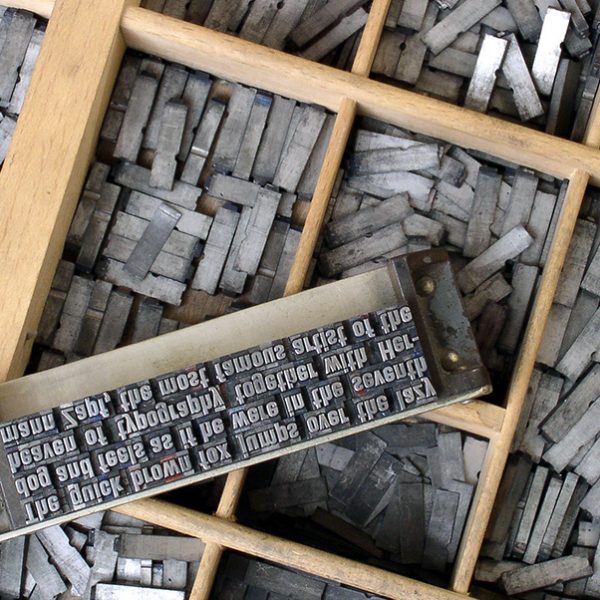From the Designer’s Desk: Roy Brooks
Our March 2015 edition of From the Designer’s Desk is a delightful tour through successive iterations of design for a new book entitled Diego Rivera and Frida Kahlo in Detroit, which we are honored to distribute for the Detroit Institute of Arts (the book accompanies an exhibition of the same name, currently on view at the museum). The book’s designer, Roy Brooks of Fold Four, Inc. takes us from version A, to version B, and finally to version C, the stunning final design for the book.
Roy Brooks–
I was honored to be selected to design the catalogue for the Detroit Institute of Arts’ Diego Rivera and Frida Kahlo in Detroit exhibition. This survey is an in-depth look at the brief period the couple spent in the city, which yielded one of the triumphs of Rivera’s career, the Detroit Institute Murals. At the same time, the experience was an emotionally and physically trying one for Kahlo, whose own artwork, fueled by her misery, would years later reach wide acclaim.
The book was structured less like a traditional art book (essays followed by a plate section), and more like a storybook, with plates and comparative illustrations spread throughout each essay. Given this narrative focus, I wanted the book to feel more akin to an exciting, clothbound novel you might pull off a library shelf rather than an oversized and glossy coffee table book. As a result, I focused on smaller trim sizes, as well as binding materials that would lend the book a sense of warmth and immediacy.
Following are the three distinct design schemes that I developed for the project:
Version A
This version features a three-piece binding, with paper over board covers and a yellow cloth spine. The antiseptic greenish-blue is intended to evoke Kahlo’s anguish during this time due to her own health issues as well as the recent death of her mother. Yellow, symbolic of their native Mexico and/or the more gregarious Rivera, acts as a vibrant contrast.
Essay title pages are on the recto page, and mimic the cover treatment. A two column layout yields the greatest number of words per page of the three versions.
Version B
This scheme features a cloth, hardcover binding, with foil stamped title and a tipped-on cover image. The featured snapshot shows an intimate moment between Rivera and Kahlo, and suggests a privileged viewpoint into their lives.
The endpapers showcase halftone photos of Ford’s River Rouge plant, a technological marvel that inspired much of the imagery Rivera developed for the murals.
The photo album quality of the cover is carried through to the interior of the book, with photographs ganged up on tinted pages. Plates are distinguished by being treated in a more traditional manner, floating on the white page.
Version C
This final version is the scheme ultimately chosen by the Museum for implementation. It features a printed cloth binding with rounded spine. The totemic title type plays up the iconic nature of these well-known names. The type strives for monumentality, much like the murals that brought Diego and Frida to Detroit in the first place. This central axis is reprised throughout the book, from essay title treatments to captions, headers, and folios.
The yellow and red color palette is derived from Rivera and Kahlo’s longtime affiliation with the communist party. Also proposed was an alternate, type-only version of the cover, stamped on yellow cloth.
The golden section, used extensively by Rivera in his design of the murals, is utilized as the basis for the page grid inside the book. This grid dictates the placement of the essay text within the page, as well as the three widths of figures throughout. The figures were originally proposed as sepia-toned, while a warm reddish-orange is used as a typographic accent color.
Click here for a full archive of From the Designer’s Desk posts.























